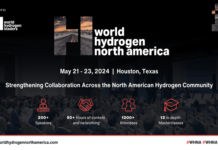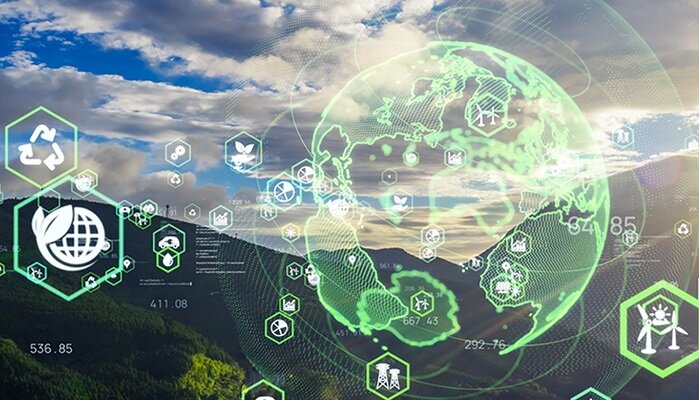The global shift when it comes to renewable energy is well underway. This is a transition highlighted by a COP28 agreement among over 130 governments so as to triple renewable energy capacity by 2030. That surprise component revs up tailwinds already offered by the U.S. Inflation Reduction Act’s green energy incentives.
Now, one goes on to face an inevitable question: What happen to be the next steps? Where does one go from here? How does one avoid the mistakes of Cleantech 1.0, when the government spending programs in the 2000s artificially throttled many green business models that went on to ultimately fail?
Let us get a perspective on how the business world can go ahead and spend wisely in this transformative field. In other words, how can one ensure that the renewable energy economy happens to be viable financially as well as environmentally?
Checking climate change by way of speeding the world’s transition away from fossil fuels happens to be the most important challenge of this generation. But the flourishing demand when it comes to renewable energy is indeed outpacing the ability so as to deliver it. Investments within the companies as well as technologies that would help to change must become smarter as well as more precisely targeted.
Real-world conditions go on to demand that any model, in order to advance the clean energy transition, recognize numerous 21st-century realities. Sources such as solar and wind are subject to intermittency, which is not always available in order to provide electricity because of their nature. Peak user demand does not always go on to align with peak-generating potential, which is a phenomenon illustrated by the so-called duck curve. Add in electrification when it comes to transportation, home appliances, and heating, which apparently will double or triple electricity demand, and the challenge becomes even more uphill.
The power grid requires more automation if it has to be flexible in matching supply to demand. The fact is that customers will expect significant benefits as well as minimal hassle if they join the clean energy revolution.
The investments that pay off are going to be the ones that address these realities when it comes to innovative ways. Companies that fit into one of these categories have the greatest potential in terms of success. These happen to be the four pillars of the clean energy transition.
1. Digitally Driven Electricity Networks
Headlines go on to result when supply as well as demand slip out of balance, emphasizing the grid to the point of outages that are witnessed during extreme weather. The reverse can also sometimes go on to take place, with supply being so huge that electricity prices go on to fall below zero. As one adds more electric assets to the grid, right from electric cars to backup batteries that can go ahead and power a whole neighbourhood during an electricity outage, one can go on to see a more complex as well as dynamic grid than one may have ever envisioned.
By way of using predictive analytics as well as artificial intelligence, dynamic software platforms can go ahead and coordinate the bounty of solar energy on sunny days so as to shift demand away from the conventional power providers. Due to this, automated electric networks go ahead and simultaneously decrease carbon emissions while also rolling out renewables at a scale that is not achievable with conventional grid designs.
2. Elevated Operational Efficiency
Managing the production of renewable energy is one of the issues that utilities face. Existing infrastructure often goes on to limit the ability so as to deliver that power to the customer.
In the long run, all this means fresh transmission lines. In the meantime, the efficiency of today’s energy networks can go on to be optimized by way of rolling out artificial intelligence as well as cloud computing, and edge computing.
For instance, line capacity today happens to be often based on estimates that include weather conditions as well as other factors. Real-time tracking by way of using remote sensors can go on to detect actual line conditions. There is better data on how much electricity a given line can go on to carry without overheating, which can add as much as 30% more power to an existing transmission system. That newfound capacity, therefore, can go ahead and help the industry scale new power generation resources to support broader electrification.
3. Decarbonizing the Gas Pipelines
Taking into account today’s realities means recognizing that natural gas happens to still have a role as a transitional step on the way so as to fully decarbonizing the grid. The vast, established network when it comes to pipelines in the U.S. will be in use for the foreseeable future as one goes on to move to cleaner solutions. In the long term, they also happen to hold potential when it comes to carrying renewable natural gas as well as hydrogen, a zero-carbon energy source, which is increasingly the focus when it comes to technology innovators.
The fact is that as a practical consideration, excavation will continue to be necessary for maintaining existing networks as well as also adding or replacing pipelines. In order to meet the speed of climate change, such infrastructure work will indeed raise the need for technologies such as precise underground mapping. A parallel green-tech opportunity also happens to lie in the growing adoption when it comes to electric excavators as well as backhoes that decrease carbon emissions by replacing diesel equipment.
4. Putting Customers First
Not least among requirements so as to reach net zero happens to be a culture of placing the customer first. There are indeed clear business and planetary advantages when it comes to having customers look out for carbon-reducing solutions as well as adopt grid-friendly behaviors and not dragging them to embrace the concept.
Climate awareness as well as lower costs, which include tax incentives, happen to be already proven inducements. But, optimizing vehicle charging as well as making it more cost-effective cannot just make the customers happier; it can also go ahead and help power providers balance out periods of high demand that can reduce the requirement so as to fire up fossil-powered backup generators.
Going After a Clear-Eyed Vision of the Future
Whether in terms of power companies, technology innovators, investors, or even customers, the opportunities a clean energy transition creates happen to be vast, which are limited only by imagination as well as creativity. In order to achieve a carbon-free economy that is sustainable, renewable, as well as financially viable, one must go on to apply the most relevant technologies being developed today so as to face the challenges of tomorrow.












































